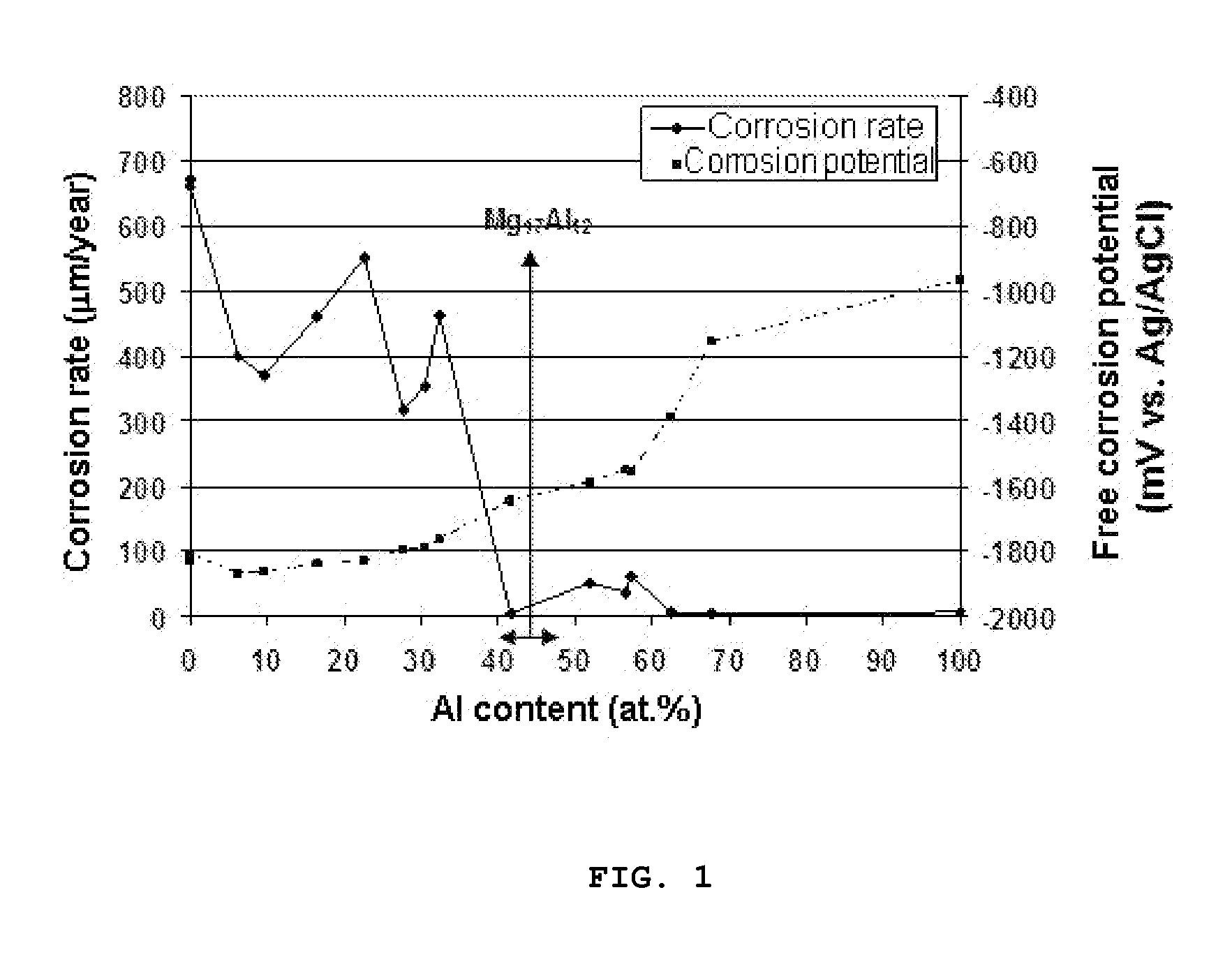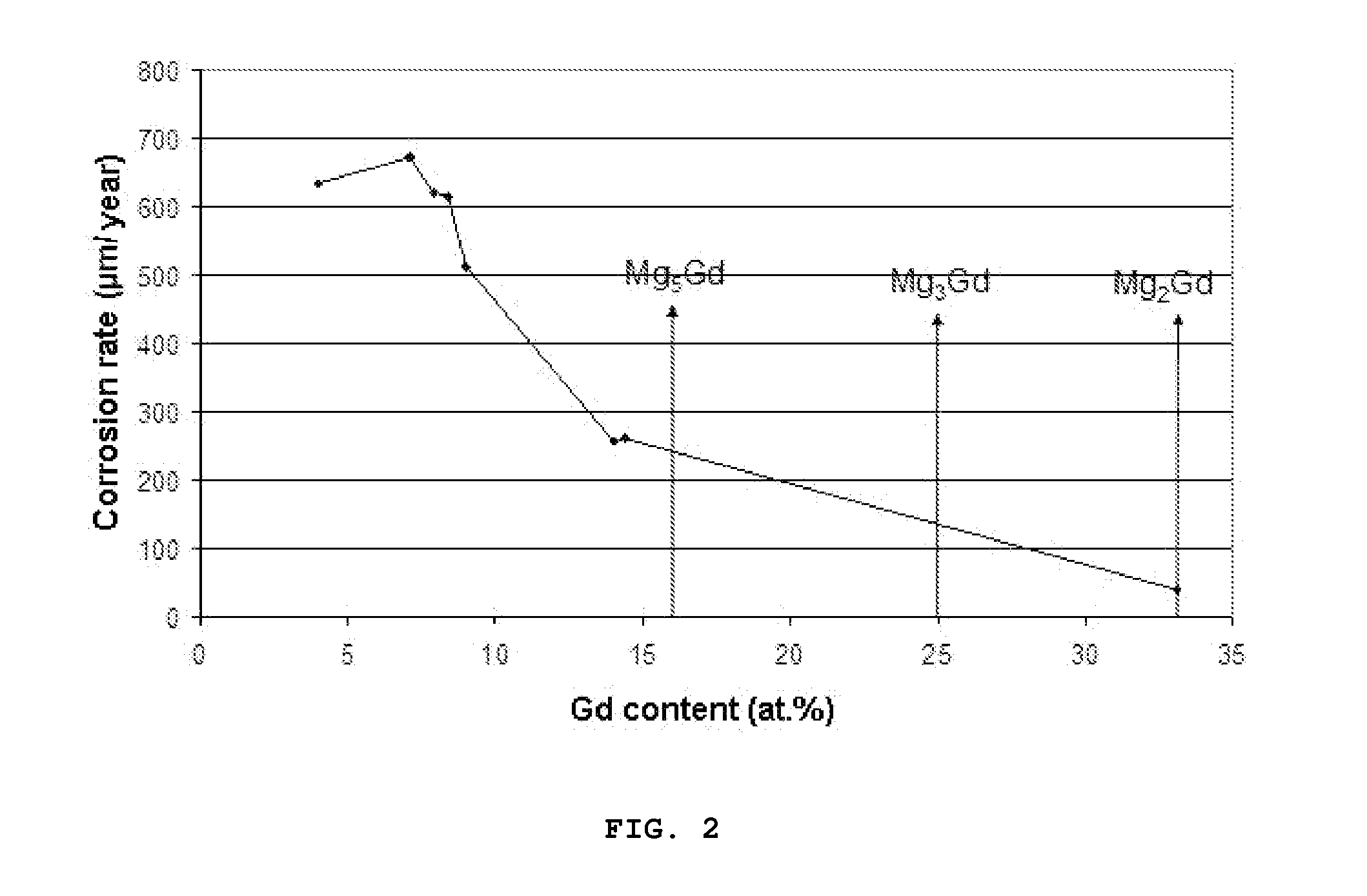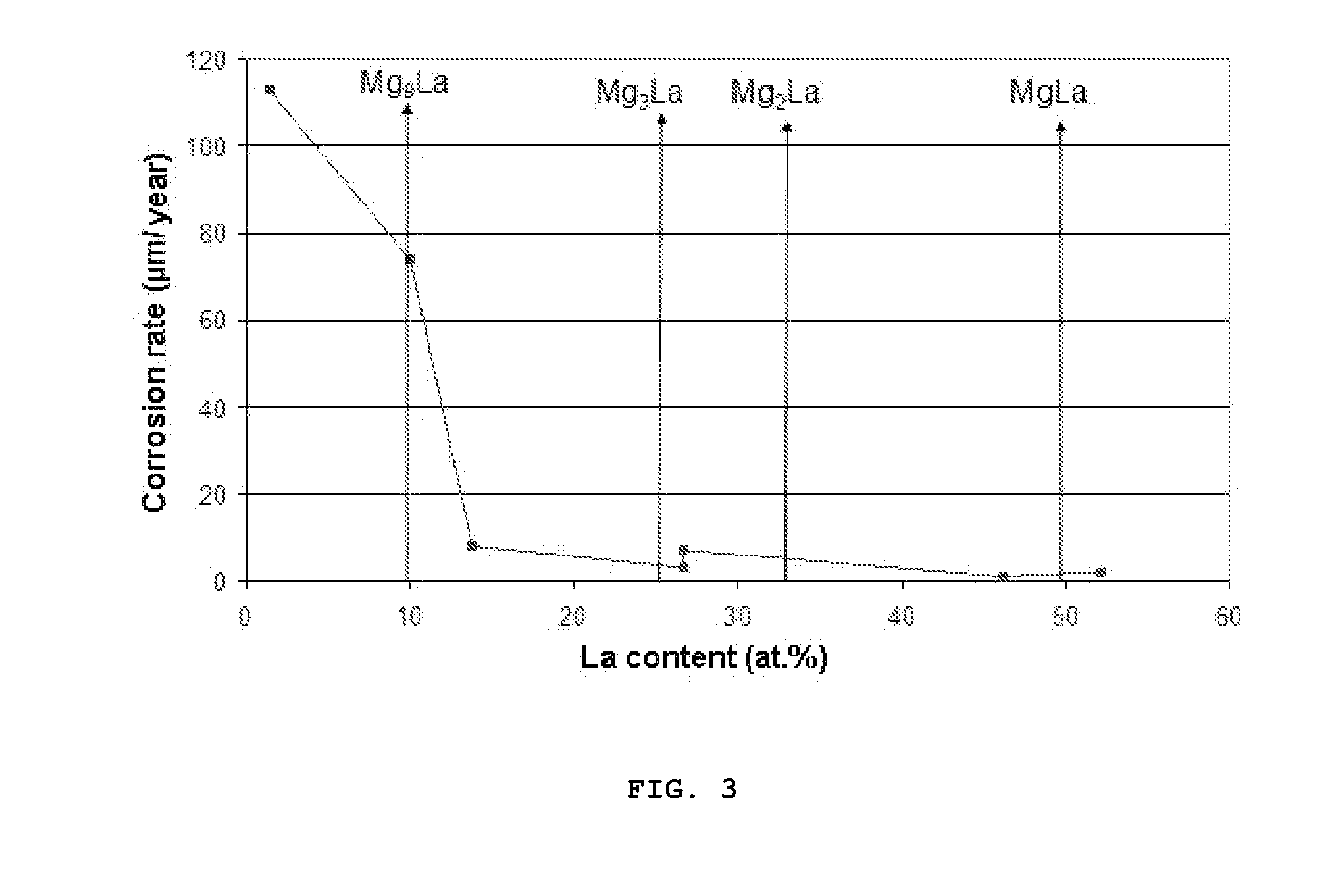Magnesium Components with Improved Corrosion Protection
a technology of magnesium oxide and corrosion protection, applied in the direction of magnetic materials, ion implantation coatings, chemical vapor deposition coatings, etc., can solve the problems of magnesium oxide not being able to protect the material, the corrosion resistance of unprotected surfaces is not strong enough, and the barrier for the use of magnesium alloys continues. to achieve the effect of improving corrosion protection
- Summary
- Abstract
- Description
- Claims
- Application Information
AI Technical Summary
Benefits of technology
Problems solved by technology
Method used
Image
Examples
example 1
[0035]Various magnesium-aluminum coatings having different Mg:Al ratios were produced on silicon and AZ31 alloys by sputtering two different targets, specifically an Mg target and an Al target, with cathode rays of differing energy. The coating thickness was about 3 μm, the vacuum beforehand was about 10−7 mbar, and the sputtering gas was argon, which was used at a gas pressure of 0.2 Pa.
[0036]FIG. 1 shows the corrosion rate (solid line) in mm / year and the free corrosion potential (dashed line) in mV depending on the aluminum concentration (in % by weight) of the coating.
[0037]The corrosion potential of the coating is in the range of 0 to 50% by weight below the potential of the substrate (AZ31), which reduces the risk of galvanic corrosion. Good passivation is achieved in the range of 40-50 at. % of Al. In this range, the layers likewise have very low corrosion rates, with a minimum of about 5 μm / year.
[0038]Table 1 hereinbelow provides an overview of various properties of the alloy...
example 2
[0039]The corrosion properties can be further optimized if a further element is added to the alloy to form an Mg—Al—Y alloy. In the present case, the corrosion rate was investigated at different lanthanum contents:
Corrosion rateAt. % MgAt. % AlAt. % La(μm / year)91.37.61.11545236.911.11645.353.31.412243.153.83.112341.836.321.921
example 3
[0040]As in Example 1, binary magnesium-gadolinium coatings having different Mg:Gd ratios were produced.
[0041]FIG. 2 shows the corrosion rate in mm / year depending on the gadolinium concentration (in at. %) of the coating.
[0042]As in the Mg—Al system, the corrosion rate in the Mg—Gd system also drops considerably as soon as the microstructure of the coating becomes nanocrystalline / amorphous.
PUM
| Property | Measurement | Unit |
|---|---|---|
| thickness | aaaaa | aaaaa |
| corrosion rate | aaaaa | aaaaa |
| corrosion rate | aaaaa | aaaaa |
Abstract
Description
Claims
Application Information
 Login to View More
Login to View More - R&D
- Intellectual Property
- Life Sciences
- Materials
- Tech Scout
- Unparalleled Data Quality
- Higher Quality Content
- 60% Fewer Hallucinations
Browse by: Latest US Patents, China's latest patents, Technical Efficacy Thesaurus, Application Domain, Technology Topic, Popular Technical Reports.
© 2025 PatSnap. All rights reserved.Legal|Privacy policy|Modern Slavery Act Transparency Statement|Sitemap|About US| Contact US: help@patsnap.com



